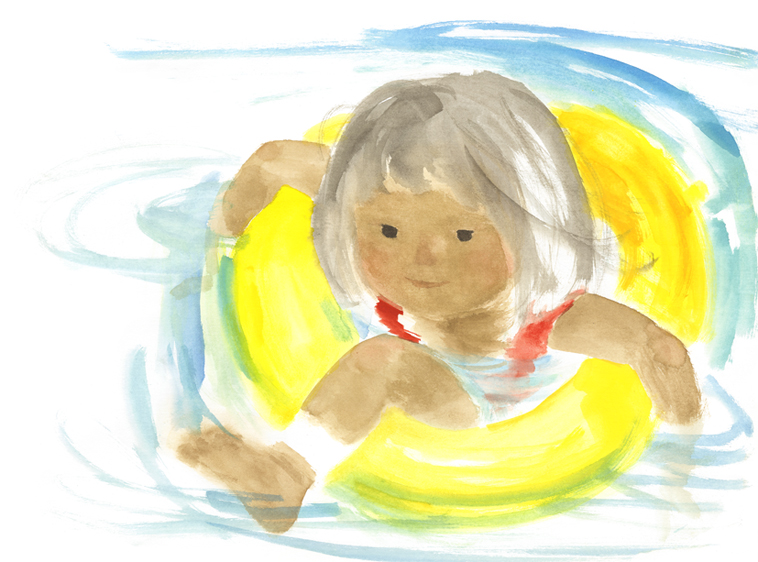
Chihiro Iwasaki, The Girl Floating in a Rubber Ring, from Pochi no Kita Umi (What’s Fun without a Friend?), Shiko-sha, 1973
-
Commemorating the 50th Anniversary of Chihiro Iwasaki’s Passing: To All ChildrenA.So.Bo (Let’s Play)
Commemorating the 50th Anniversary of Chihiro Iwasaki’s Passing
From Chihiro to the children of today and those who were once children—
2024 marks the 50th anniversary of Chihiro Iwasaki’s passing. Over this past half century, the world has changed dramatically, as has the surroundings in which children now find themselves. Against this new backdrop, what do Chihiro’s works tell us today?
Throughout 2024, the Chihiro Art Museum (Tokyo and Azumino) will hold a new exhibition aimed at interpreting Chihiro’s artwork through the three themes of “play,” “nature,” and “peace,” incorporating a modern scientific perspective that both children and adults will want not only to look at but also participate in.
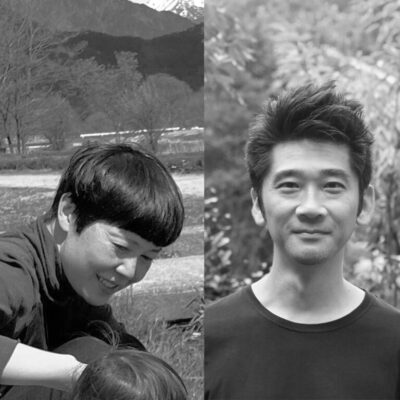
Exhibition Directors: Motoshi Chikamori + Ai Ohara (plaplax)
With a focus on the creation of interactive art, the activities of these artists span a wide range of fields that include exhibition composition, spatial presentation, and video content planning and production. Employing a variety of methods and media, they work to create experiences that make possible creative learning and discovery. In 2018, the two participated in the exhibition series Life—The 100th Anniversary of Chihiro Iwasaki’s Birth: Play plaplax, which was held at Chihiro Art Museum.
https://plaplax.com/
“Innocent children, beautiful nature, a wish for peace.”
These were themes that Chihiro depicted in her artwork throughout her life.
In the year that marks 50 years since her death, when we tried to address these themes anew, we decided to look at them through the eyes of science. But this doesn’t mean that we drew on difficult knowledge and information. Start by taking a close look at what you see in front of you. Accept it as it is. We don’t consider the eye of science to be something just for special people to consider difficult things, but rather a means that anyone can use to transform a familiar landscape into a rich world full of new discoveries. Children, by their nature, likely view the world in this way.
Visitors looking at the works at the venue, touching them, and moving their bodies. Children and adults alike excitedly working their way forward while exclaiming, “Wow! What’s this?” This is the kind of exhibition we wanted to realize.

Graphic Design:Tomohiro Okazaki
Tomohiro Okazaki established his own design studio, SWIMMING, in September 2011. Working from a foundation based in graphic design, he flexibly connects such visual communication media as printed materials, video, and exhibitions, and engages in design activities spanning both the cultural and economic realms, regardless of the scale of the work. Okazaki is strongly attracted to the potential of design work as an opportunity to confront unknown worlds and phenomena, to connect with people and society, and to discover and engage with the way the world is perceived and structured.
https://www.swimmingdesign.com/profile/
Chihiro’s illustrations are with us in our lives in the form of books or printed matter. I’m interested in the boundary where our daily lives and her world blend together. I feel the word “richness” applies to the feeling that is borne when the time we live in comes in contact with Chihiro’s world. What I’m trying to achieve in the graphic design of posters and fliers [for the Chihiro Museum’s 2024 exhibitions] is a graphic image as an object or space where Chihiro’s world and our world overlap. Although illustrations exist as two-dimensional objects, they actually exist together with physical things and space. I will attempt to design a state in which illustrations overlap with the world we live in. And I imagine that it would be possible to design a means of melding this perspective into the graphics of the exhibit rooms as well.
The children in Chihiro Iwasaki’s illustrations are always engaged in play. Some children make friends with stuffed animals, others play in puddles on a rainy day, and some even turn cleaning into a form of play. Children explore the world and acquire knowledge through play. In this exhibit, we approach Chihiro’s works depicting children at play from the perspective of developmental psychology and, at the same time, turn viewing artwork in the museum into play. Equipment will be offered for looking at some of the works and visitors will also encounter works that they can physically enter. This is an exhibition that will enable you to think about the present and future of children while freely enjoying Chihiro’s world.

Exhibition Cooperation: Yusuke Moriguchi (Associate Professor, Developmental psychology, Cognitive science, Kyoto University)
Professor Moriguchi specializes in developmental psychology and developmental cognitive neuroscience. He studies the cognitive, social, and brain development of children. In addition, he disseminates his findings about child development through lectures to parents and others who work with children.
Work plays a central role in the lives of most adults, but for children, play is the center of their lives. Viewed from a psychological perspective, it is believed that by enjoying play, children can fill their days with energy and prepare themselves for adulthood.. Also, children can enjoy playing with even the most boring things. Chihiro Iwasaki’s illustrations clearly capture the essence of children at play. And, above all, what makes her works so wonderful is that she depicts playing from a child’s perspective. In this exhibit, we invite you to view her work while playing.
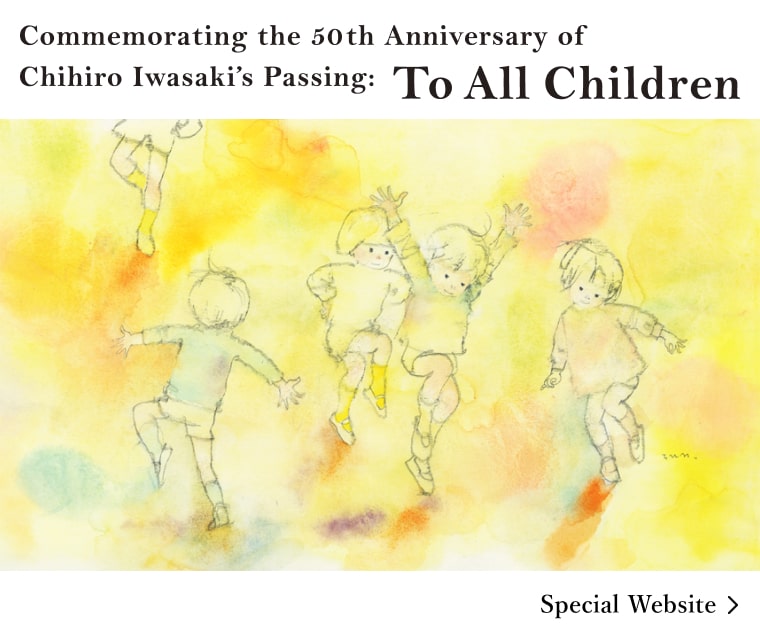

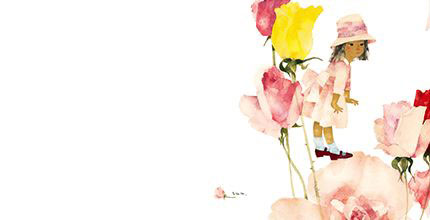



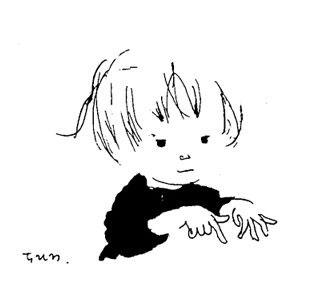
SNS Menu